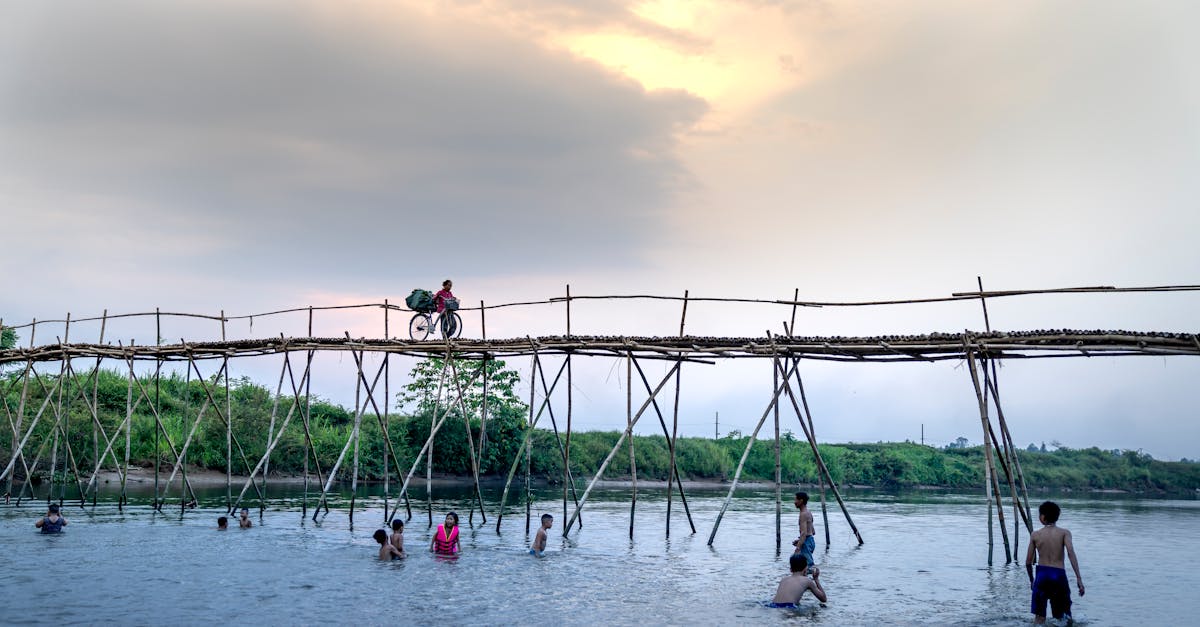Impending Global Water Shortage Crisis By 2035
Introduction
In the face of rapid climate change and escalating population growth, scientists worldwide are sending a clear warning: water resources are dwindling at an alarming rate. By 2035, global regions may confront severe water shortages that could impact billions of lives. Oceans cover the majority of Earth, yet only 3% of water is fresh, and even less is accessible for human use. With every passing year, the delicate balance of the global water cycle is disrupted by human activities and a warming planet. Countries around the world are thus on high alert, seeking innovative solutions to address this pressing challenge. Decision-makers, scientists, and communities must act swiftly to prevent a global water crisis.
Advertisement
Understanding the Water Cycle Disruption
Water scarcity isn't merely a result of limited resources; it's a product of the disrupted natural water cycle. Rising global temperatures lead to evaporation, changing precipitation patterns, and more frequent droughts. Glaciers, a crucial component of freshwater supply, continue to melt, reducing snow fields and impacting downstream water availability. Urbanization compounds these problems, creating impermeable surfaces that hinder water absorption into the ground. Furthermore, deforestation reduces atmospheric moisture and disrupts regional rainfall patterns, exacerbating water shortages. These interconnected phenomena highlight the vulnerability of water sources to environmental shifts, demanding an urgent reconsideration of how water is managed globally.

Quang Nguyen Vinh/Pexels
Advertisement
Global Demand and Overexploitation
Rapid population growth and economic development are amplifying global water demand—a demand that current infrastructures can scarcely meet. From agriculture to industry, water is an indispensable resource driving economies. But with over 70% of accessible freshwater consumed by agriculture alone, overexploitation becomes a tangible concern. Inefficient irrigation methods lead to significant water wastage while industrial activities contribute to water pollution, rendering millions of gallons unusable. In urban areas, sprawling cities heavily depend on distant water supplies, leading to unsustainable withdrawal from natural reservoirs. Solving this complex issue requires a multifaceted approach to improve efficiency and sustainability in water usage.
Advertisement
Consequences of Water Pollution
Water scarcity problems are worsened by pollution, affecting the quality of water reservoirs worldwide. Massive amounts of industrial waste, agricultural runoff, and untreated urban sewage seep into freshwater sources, poisoning crucial water bodies. Polluted water poses serious health risks for millions, increasing the potential for waterborne diseases. Ecosystems, too, suffer the repercussions as aquatic habitats are irrevocably altered, threatening biodiversity. Addressing water pollution effectively demands strengthening regulatory frameworks, encouraging community-driven action, and investing in purification technologies to ensure rivers, lakes, and aquifers remain viable sources of fresh water.
Advertisement
Climate Change Catalysts
Climate change introduces unpredictable variations in water availability, intensifying the water crisis. Regions once abundant with water might experience prolonged droughts, while others face devastating floods. Extreme weather patterns not only destroy infrastructure but also deplete freshwater reserves. Sea level rise further threatens coastal aquifers, rendering them saline and unusable. As climate change science advances, it becomes evident that solving the water shortage issue is intrinsically linked with combating climate change. Global efforts to reduce greenhouse gas emissions, alongside local adaptation strategies, are paramount in mitigating these climate-induced water challenges.
Advertisement
Technological Solutions and Innovations
Researchers and engineers are turning to technology to confront the water crisis head-on. Desalination plants have been developed to convert seawater into potable water, though the energy-intensive process remains costly. Smart irrigation systems and precision farming technologies aim to reduce water wastage in agriculture, increasing efficiency. Water recycling and greywater systems are gaining momentum, offering alternative sources for non-potable uses. Furthermore, advanced sensor systems and data analytics in water management infrastructure enable real-time monitoring of water levels, ensuring efficient distribution and usage. Innovations continued focus on tech-driven solutions are vital in the quest for water sustainability.
Advertisement
Policy and Global Cooperation
Preventing a global water crisis requires comprehensive policy frameworks and international collaboration. Effective water management practices, ranging from sustainable agriculture policies to urban water conservation initiatives, form the basis for long-term water security. International agreements, such as transboundary river treaties, are essential in managing shared water resources, preventing conflicts, and encouraging fair distribution. Moreover, cross-border cooperation is necessary for research-sharing and capacity-building, enhancing countries' abilities to mitigate water challenges. Governments must also prioritize investments in infrastructure and adaptive technologies to support vulnerable communities and ensure equitable access to water resources.
Advertisement
Community-Led Initiatives and Awareness
Amidst global efforts, local communities play a crucial role in water preservation. Grassroots initiatives focus on educating the public, encouraging conservation practices, and restoring ecosystems can have a substantial impact. Community-driven projects, such as rainwater harvesting and reforestation, mobilize citizens to take active roles in water management. NGOs and advocacy groups work tirelessly to promote global awareness, emphasizing responsible water consumption and the value of each droplet. Empowering communities with resources and knowledge is paramount in fostering resilience against water scarcity, aligning grassroots actions with larger frameworks for collective impact.
Advertisement
Challenges Ahead and Points of Contention
While tackling water shortages involves multifaceted strategies, challenges such as economic disparities, resource allocation debates, and political rivalries complicate progress. Balancing economic development with environmental conservation presents a paradox that affects policy implementation. Societal inequalities mean that the most vulnerable, predominantly rural populations, might not receive adequate support, escalating risks. Discussions over water rights often lead to geopolitical tensions, which can undermine collaborative efforts. Addressing these critical challenges necessitates courage from political and social stakeholders alike, ensuring that equitable water access transcends economic and national boundaries.
Advertisement
Conclusion
The forewarning of a severe global water crisis by 2035 is a call to action for all sectors of society. As water resources dwindle, the world faces unprecedented challenges requiring immediate and sustained action. Coordinated efforts spanning across science, policy, technology, and community engagement are essential in preventing this impending catastrophe. Water is a shared necessity; its preservation not only fulfills fundamental human rights but also protects ecosystems and sustains diverse livelihoods. A united worldwide response is both urgent and feasible, promising hope for a resilient and water-secure future.
Advertisement
